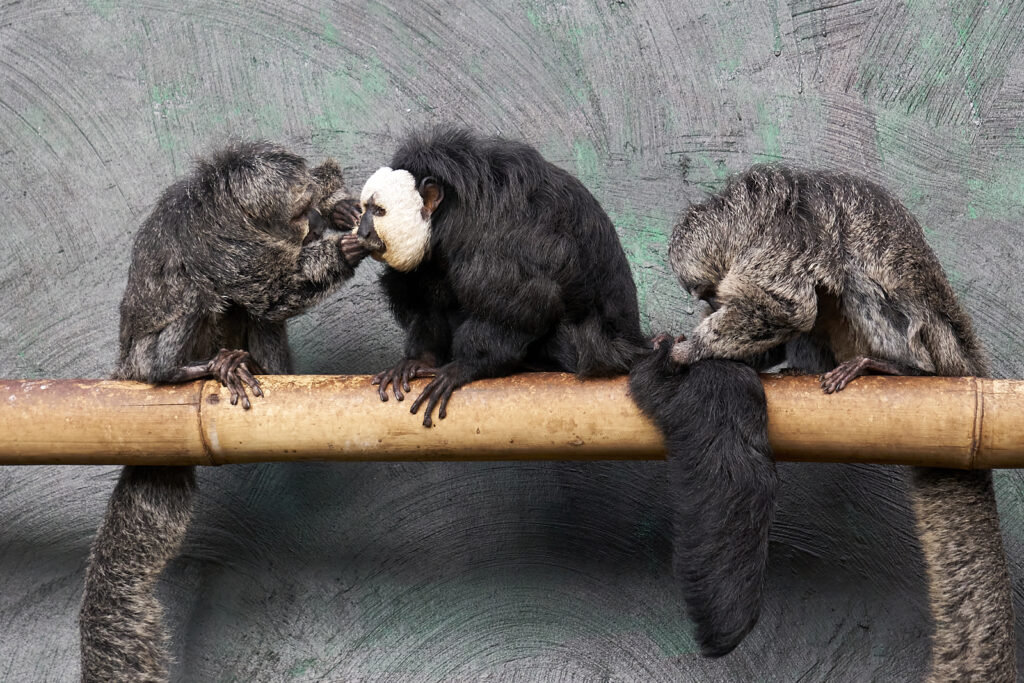Background
Aims
Differences in taste perception between species are thought to reflect evolutionary adaptations to dietary specializations. The broad range of dietary habits in primates has led to ample research on taste performance in this order of mammals. Particularly, taste responsiveness for food-associated carbohydrates has been of considerable interest since sugars perceived as “sweet” by humans constitute the bulk of the metabolic energy in the diet of frugivorous primates. However, other substances perceived as sweet by humans have been rarely investigated.
It has been widely accepted that food composition may affect taste perception in primates. Multiple comparative studies have suggested that frugivorous primates display a significant positive correlation between food preferences and carbohydrate content. It is also plausible that there is a positive correlation between a species’ gustatory sensitivity to soluble carbohydrates and its frugivory level. Additionally, comparative studies using two-bottle preference tests have shown significant differences in taste responsiveness among different primate species. In spite of this, little is still known about how primates differ in the perception of the sweetening potency of naturally occurring carbohydrates.
To date, no study so far assessed taste responsiveness in frugivorous seed predator species. The white-faced saki (Pithecia pithecia) stands apart from other frugivorous primates due to its dietary specialization on seeds and unripe fruits despite also relying on ripe fruits. Seeds are an inaccessible resource for most of the frugivorous primates which therefore serve as seed dispersers instead. In contrast, white-faced sakis show distinctive adaptations for the extraction, mastication and exploitation of seeds and their nutrients, comprising up to 88% of their monthly diet. The sclerocarpy of white-faced sakis might reflect an adaptative strategy for exploiting highly nutritious immature seeds of unripe fruits, avoiding possible competition with ripe-fruit specialists, and minimizing food shortages.
Due to the substantial ingestion of young seeds of immature fruits, which are particularly rich in lipids but low in soluble carbohydrates, white-faced sakis include significantly more lipids in their diet than other frugivorous primates, representing almost 16% of the average nutritional intake. Unripe fruits also constitute a considerable proportion of white-faced sakis´ diet, containing comparatively lower levels of soluble carbohydrates than fully ripe fruits. In addition, recent food preference tests have also shown a weaker correlation between food preferences and carbohydrate content compared to the strong correlation between food preferences and lipid content, suggesting that white-faced sakis may rely on lipids as a main source of metabolic energy.
Are white faced-sakis as sensitive to sweet-tasting substances as seed-dispersing primates or does their gustatory sensitivity reflect a dietary adaptation to seed predation?
The aim of the present study was to perform a first assessment of taste responsiveness to seven sweet-tasting substances in a frugivorous seed predator as the white-faced sakis
- To determine taste preference thresholds for five food-associated carbohydrates (sucrose, fructose, glucose, maltose, and lactose) that are perceived as sweet by humans.
- To determine taste preference thresholds for two steviol glycosides (rebaudioside A and stevioside), two comercially sold low-calorie artificial sweetners.
- To assess relative taste preferences for the five food-associated carbohydrates based on their relative sweetness.
- To compare the results from the present study with those obtained in primates tested to date for further assessment of the presumed correlation between sweet-taste sensitivity and frugivory.
